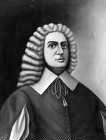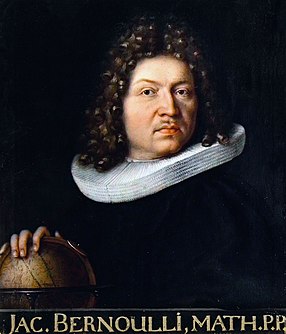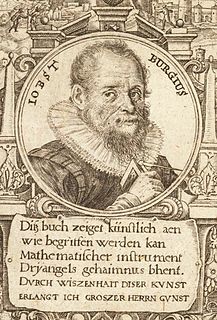 W
WJakob Abbadie, also known as Jacques or James Abbadie, was a French Protestant minister and writer. He became Dean of Killaloe, in Ireland.
 W
WJean Jacques Joseph d'Alt was a Swiss officer and administrator.
 W
WJakob Ammann was an Anabaptist leader and namesake of the Amish religious movement.
 W
WJacob Bernoulli was one of the many prominent mathematicians in the Bernoulli family. He was an early proponent of Leibnizian calculus and sided with Gottfried Wilhelm Leibniz during the Leibniz–Newton calculus controversy. He is known for his numerous contributions to calculus, and along with his brother Johann, was one of the founders of the calculus of variations. He also discovered the fundamental mathematical constant e. However, his most important contribution was in the field of probability, where he derived the first version of the law of large numbers in his work Ars Conjectandi.
 W
WJohann Bernoulli was a Swiss mathematician and was one of the many prominent mathematicians in the Bernoulli family. He is known for his contributions to infinitesimal calculus and educating Leonhard Euler in the pupil's youth.
 W
WJost Bürgi, active primarily at the courts in Kassel and Prague, was a Swiss clockmaker, a maker of astronomical instruments and a mathematician.
 W
WNiklaus Dachselhofer was a Swiss politician in Bern. He became a member of the canton's Grand Council in 1628 and one year later also a member of the city council. From 1636 to 1667 he was Schultheiss (mayor) of Berne.
 W
WSigmund von Erlach was a Swiss military commander and a politician of Bern.
 W
WJohann Jakob Grynaeus or Gryner was a Swiss Protestant divine.
 W
WPaul Guldin was a Swiss Jesuit mathematician and astronomer. He discovered the Guldinus theorem to determine the surface and the volume of a solid of revolution. Guldin was noted for his association with the German mathematician and astronomer Johannes Kepler. Guldin composed a critique of Cavalieri's method of Indivisibles.
 W
WJohann Heinrich Hottinger was a Swiss philologist and theologian.
 W
WJörg Jenatsch, also called Jürg or Georg Jenatsch, was a Swiss political leader during the Thirty Years' War, one of the most striking figures in the troubled history of the Grisons in the 17th century.
 W
WNiklaus Leuenberger was a leader of the Swiss peasant war of 1653.
 W
WMatthäus Merian der Ältere was a Swiss-born engraver who worked in Frankfurt for most of his career, where he also ran a publishing house. He was a member of the patrician Basel Merian family.
 W
WPompeius Planta was a leader of the Spanish-Austrian Party during the so-called Bündner Wirren. His murder by Jörg Jenatsch marked a key Protestant uprising in Graubünden during the Thirty Years War.
 W
WDomenico Trezzini was a Swiss architect who elaborated the Petrine Baroque style of Russian architecture.
 W
WHans Conrad Werdmüller was a Swiss military commander and a member of the city council of Zürich.
 W
WSebastian Peregrin Zwyer was a Swiss military commander, mercenary entrepreneur, and one of the foremost politicians of the Old Swiss Confederacy in the seventeenth century.